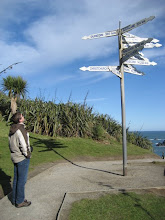Montana has a spell on me. It is grandeur and warmth. If Montana had a seacoast, or if I could live away from the sea, I would instantly move there and petition for admission. Of all the states it is my favorite and my love.--John Steinbeck, Travels with Charley in Search of America
"In... 1960, John Steinbeck and his poodle, Charley, embarked on a journey across America." Starting in New York he drove counter-clockwise around the United States in a three-quarter-ton pickup-truck with a camper top. Avoiding main thoroughfares he visited nearly forty states, with a stop in Seattle. Among other places, he visited the Badlands, Montana, California, Texas, New Orleans (witnessing an event in the history of desegregation), and then drove quickly through Virginia and back home to New York.
In 1962, my father, after reading Travels with Charley, went to graduate school in Montana. His future wife had refused to marry him until she finished her undergraduate degree, so he decided to study pharmacy in the meantime. In the middle of winter, he found the deep dark nights, white-out blizzard days, and forty below temperatures depressing. So he took a bus to Portland, Oregon, arriving with $50. He bought a newspaper and called a telephone number he saw in a classified advertisement. "Is that room for rent still available? If you pick me up at the bus station I'll rent it."
In 1995 I embarked on a journey across America. Starting in Portland, Oregon I drove clockwise around the United States in an orange 1976 Volkswagen Westfalia. Avoiding main thoroughfares I visited thirty-eight states, with a stop in New York. Among other places, I visited Montana, the Badlands, New Orleans (requiring repair for the Westfalia while leaving town), Texas, California, then drove quickly up the coast to my new home in Seattle.
In 2007, after reading Travels with Charley, I called my father to see if I remembered his story correctly. He was surprised at my memory of the detail. Both Travels with Charley and my father's own story were told to me in a memorable, conversational way.
